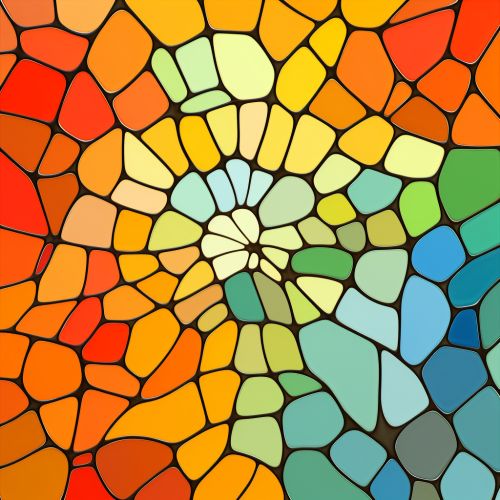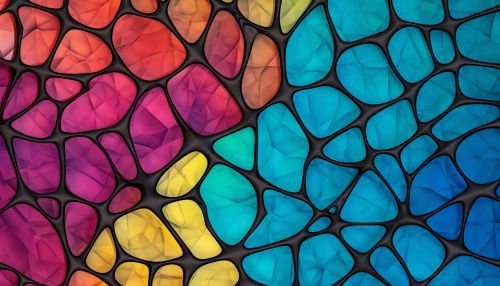Voronoi cells
Definition
A Voronoi cell, also known as a Voronoi polygon, is a region of space associated with a specific point in a set of points, such that any location within the region is closer to the associated point than to any other point in the set. This concept is named after the Russian mathematician Georgy Voronoi, who extensively studied these partitions of space.


Mathematical Description
Mathematically, a Voronoi cell is defined as the intersection of half-spaces defined by a set of points. Given a set of points P in a metric space M, the Voronoi cell associated with a point p in P is the set of all points in M that are closer to p than to any other point in P. Formally, this is defined as:
V(p, P) = {x in M : d(x, p) <= d(x, q) for all q in P}
where d(x, y) is the metric (or distance function) in M.
Properties
Voronoi cells have several important properties that make them useful in a variety of fields. Some of these properties include:
- Convexity: Voronoi cells are always convex. This is a direct consequence of the definition of a Voronoi cell as the intersection of half-spaces.
- Adjacency: Two Voronoi cells are adjacent if and only if the corresponding points in the original set are nearest neighbors.
- Dual Graph: The dual graph of a Voronoi diagram (the graph formed by connecting the centers of adjacent Voronoi cells) is a Delaunay triangulation.
- Tessellation: The set of all Voronoi cells forms a tessellation (or partition) of the space M. This property is often used in computer graphics and computational geometry.
Applications
Voronoi cells have applications in many areas of science and engineering. Some of the most common applications include:
- Computational Geometry: Voronoi cells are used in algorithms for nearest neighbor search, mesh generation, and path planning.
- Computer Graphics: Voronoi cells are used in texture mapping, terrain generation, and procedural modeling.
- Physics: Voronoi cells are used to model the structure of foams and crystals, as well as the large-scale structure of the universe.
- Biology: Voronoi cells are used to model cell structures and patterns in nature.
- Geospatial Analysis: Voronoi cells are used in spatial analysis and geographic information systems (GIS) to model and analyze spatial patterns and phenomena.
See Also
- Delaunay triangulation - Computational geometry - Geospatial analysis
